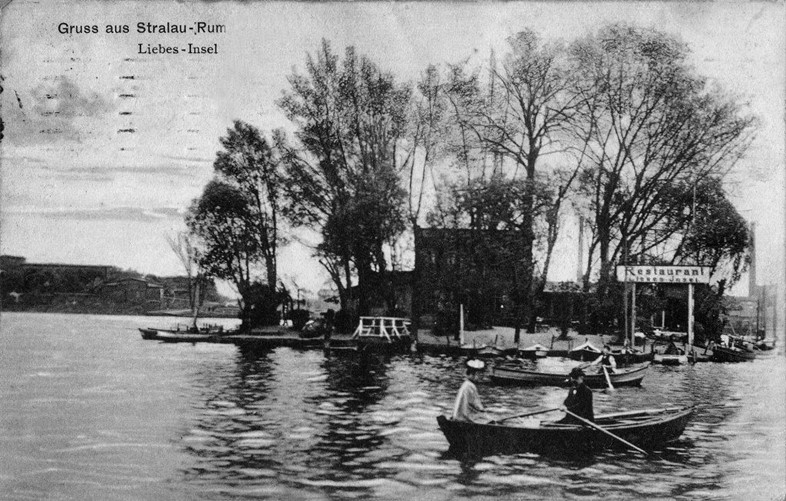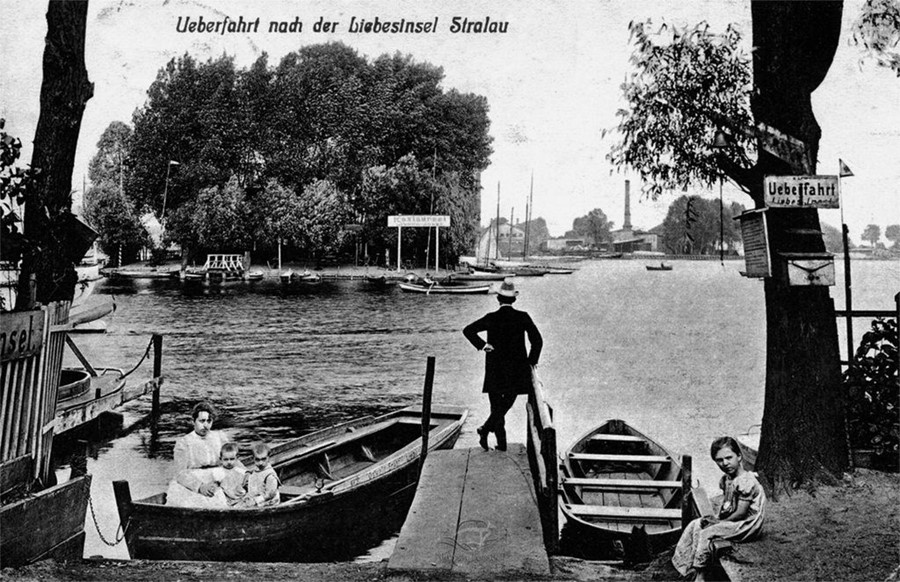A tale of tragic romance lies behind Liebesinsel, Berlin’s ‘Island of Love’
Puncturing the glassy ripples of the River Spree, located 100 metres or so from the banks of East Berlin’s Stralau peninsula, you’ll find a looming river isle with a history best described as what might happen if Gaspar Noé directed a series of Love Island.
Having emerged at the mouth of the Spree’s Rummelsburg Bay as a result of the slow build up of sand deposits from the sprawling river, the Liebesinsel (‘Island of Love’), and neighbouring island of Kratchzbuch, belonged to the historic peninsula town of Stralau until 1920, but are said to contain traces of materials and minerals that date all the way back to the Iron Age.
While the distant history of the Liebesinsel remains something of a mystery, early 19th-century German author and poet Theodor Fontane’s realist novel Der Stechlin reveals a certain tragic romanticism behind the now-uninhabited island’s name. Written between 1895 and 1897, and first published in the literary journal Über Land und Meer, Fontane’s maudlin tale of ageing widower Dubslav von Stechlin addresses Liebesinsel’s reputation as a final destination for hopelessly doomed couples. Alluding to the acquisition of the isle’s rather theatrical name, the novelist, whose works inject fictional characters and plot lines into real life environments and narratives, explains that lovers would choose Liebesinsel as a place to meet, and often, to take their own lives: “most with a letter in their hand that told it all.”

Despite its Shakespearean reputation, the Ernst family, who owned the island, ran a successful restaurant there until the Second World War. Along with the majority of the peninsula town’s establishments, the Ernst’sche Haus (Ernst’s House) restaurant was destroyed in the war, leaving only the basement as a sign of its watery existence. On Tunnelstraße on the Stralau bank of the river, Oswald Ernst ran a boat-building yard until 1918. This was the easiest location from which to make the short journey over to Liebesinsel.
Before the fall of the Berlin Wall and reunification, Stralau peninsula sat in East Germany, officially known as the German Democratic Republic, and Liebesinsel was used as a safe storage location for sought-after building materials. During this time, on the opposite bank of the river, sat the now infamous and abandoned Spreepark – once referred to as the “Disney World of Socialism”. These days, both Liebesinsel and Kratchzbuch live a quiet, swampish existence as nature reserves, offering nothing more than a leafy break in the river landscape for dog-walkers and runners of the peninsula path looking for an urban oasis.
